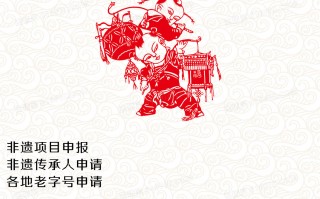
得写作认知者的四海,每晚读一则该文,维持他们的英文英文口语!
White tea during the process of withering in Fujian provinceThe tea that has delighted and fascinated the world for millennia has finally received top-level global recognition as a shared cultural treasure of mankind.
Traditional tea processing techniques and their associated social practices in China were added to UNESCOs Representative List of the Intangible Cultural Heritage of Humanity on Tuesday.
The status was conferred by the Intergovernmental Committee for the Safeguarding of Intangible Cultural Heritage, hosted in Rabat, Morocco. It consists of knowledge, skills and practices concerning management of tea plantations, picking of tea leaves, and the processing, drinking and sharing of tea.
According to UNESCO, in China traditional tea processing techniques are closely associated with geographical location and natural environment, resulting in a distribution range between 18°-37° N and 94°-122° E.
The techniques are mainly found in the provinces and autonomous regions of Zhejiang, Jiangsu, Jiangxi, Hunan, Anhui, Hubei, Henan, Shaanxi, Yunnan, Guizhou, Sichuan, Fujian, Guangdong and Guangxi. Associated social practices, however, are spread throughout the country and shared by multiple ethnic groups.
Tea growers work on Wuyi Mountains in Fujian provinceOver 2,000 tea varieties, mainly in six categories -- green, black, yellow, oolong, white and dark -- are grown in China. Core skills include
shaqing (enzyme inactivation), menhuang (yellowing), wodui (piling), weidiao (withering), zuoqing (leaves shaking and cooling),
fajiao (oxidation or fermentation) and yinzhi (scenting).Tea-related customs are not only found across the country, but also influenced the rest of the world through the ancient Silk Road and trade routes.
As a document from the Ministry of Culture and Tourism to UNESCO explained, tea is ubiquitous in Chinese peoples daily life. Steeped or boiled tea is served in homes, workplaces, tea houses, restaurants, temples and used as an important medium for communication in socializing and ceremonies such as weddings, apprentice-taking and sacrifices.
Tea is offered at a wedding of Bai ethnic group in Yunnan province"Practices of greeting guests with tea and building good relationships within families and among neighborhoods through tea-related activities are shared among multiple ethnic groups, and provide a sense of identity and continuity for communities, groups and individuals concerned," the document said.
In China, 44 registered national-level intangible cultural heritage entries are related to tea. There are over 40 vocational colleges and 80 universities in China that have set up majors in tea science or tea culture, resulting in over 3,000 graduates specializing in tea production and art every year, according to the ministry.
The inscription of the element is the 43rd entry from China on the Representative List of the Intangible Cultural Heritage of Humanity, whose total tops all other countries.
-------------------line--------------------------------千年来令世人欣喜和着迷的茶,终于得到了全球顶级认可,成为人类共同的文化瑰宝周二,我国的传统茶叶加工工艺及其相关社会实践被列入联合国教科文组织《人类非物质自然遗产代表作名录》。
该地位是由在摩洛哥拉巴特主办的保护非物质自然遗产政府间委员会授予的它包括有关茶园管理、茶叶采摘、茶叶加工、饮用和分享的知识、技能和实践据联合国教科文组织介绍,在我国,传统的茶叶加工技术与地理位置和自然环境密切相关,分布范围在北纬18°-37°和东经94°-122°之间。
主要分布在浙江、江苏、江西、湖南、安徽、湖北、河南、陕西、云南、贵州、四川、福建、广东、广西等省区然而,相关的社会实践在全国各地广为流传,并为多个种族群体所共有我国种植的茶叶品种超过2000种,主要分为青、黑、黄、乌龙茶、白、暗六大类。
核心技能包括沙清(酶失活)、门黄(变黄)、堆(堆)、萎凋(萎凋)、左青(摇叶和冷却)、发椒(氧化或发酵)和音直(发香)与茶有关的习俗不仅遍布全国,而且通过古代丝绸之路和贸易路线影响了世界其他地方正如我国文化和旅游部向联合国教科文组织提交的一份文件所解释的那样,茶在我国人的日常生活中无处不在。
泡茶或煮茶被用于家庭、工作场所、茶馆、餐馆、寺庙,并被用作社交和婚礼、学徒和祭祀等仪式的重要交流媒介该文件称:“多民族共享用茶招待客人、通过茶相关活动建立家庭和社区之间良好关系的做法,为相关社区、团体和个人提供了认同感和连续性。
”在我国,与茶相关的国家级非物质自然遗产注册项目有44项据教育部称,我国有40多所职业院校和80多所大学设立了茶科学或茶文化专业,每年有3000多名毕业生专门从事茶生产和艺术这是我国第43个入选《人类非物质自然遗产代表作名录》的项目,数量居世界首位。



还木有评论哦,快来抢沙发吧~